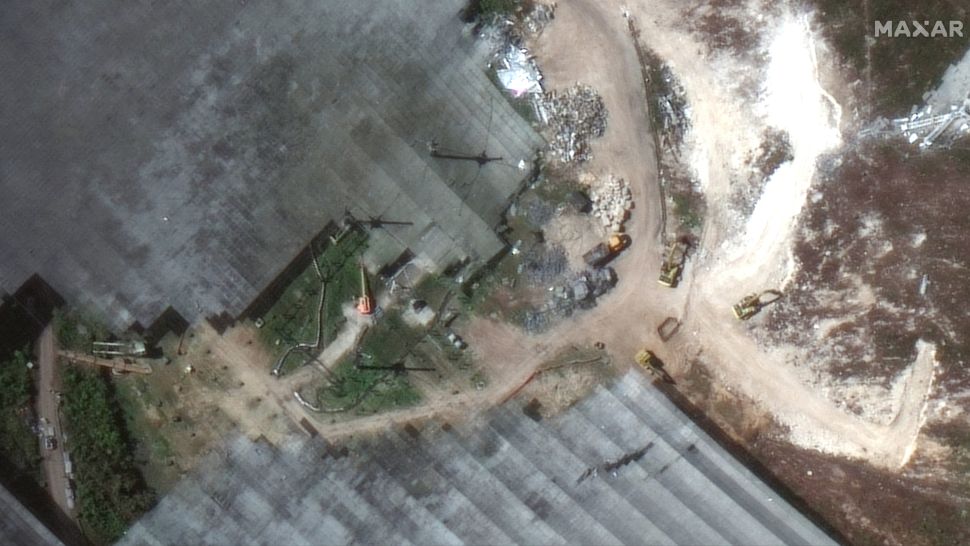Arecibo Observatory telescope cleanup could cost up to $50 million, NSF reports

Cleaning up the collapsed radio telescope at the iconic Arecibo Observatory in Puerto Rico could cost between $30 million and $50 million, according to the National Science Foundation (NSF).
The cost estimate, revealed Friday (March 5), is laid out in an NSF report required by Congress after the giant radio telescope's hanging science platform crashed down through the 1,000-foot (305 meters) dish on Dec. 1. Two supporting cables had snapped on the telescope in the months before the collapse.
The crash came less than two weeks after the NSF had decided that the structure was too unstable to risk repairing and began planning for a controlled demolition. Instead, the agency was left to clean up the wreckage.
As part of the legislation funding NSF through the end of September 2021, Congress requested a report outlining the status of the agency's investigation into the collapse, the plan to clean up the site and the procedure for determining whether the telescope will be replaced. NSF published that report on Friday.
Related: Arecibo Observatory has more science to do despite radio telescope's collapse
The biggest piece of news in the seven-page report is an initial estimate of the cost of cleaning up the radio telescope site, which NSF currently pegs at between $30 million and $50 million. The agency noted that the cost will be split between fiscal year 2021, which began Oct. 1, and fiscal year 2022.
The report emphasizes safety, as NSF has throughout the telescope's fall. "Ensuring safety has continued to be NSF's top priority," officials wrote in the report. "This includes not only the safety of personnel on the site, but also the safety of the environment in the area and the need to address concerns about historic and cultural preservation."
Get the Space.com Newsletter
Breaking space news, the latest updates on rocket launches, skywatching events and more!
The Arecibo Observatory: Puerto Rico's giant radio telescope in photos
To that aim, NSF reported that it is in conversations with a host of agencies about potential implications of the clean-up process, from U.S. Fish and Wildlife Service to the Puerto Rico State Historic Preservation Office.
Most in question at this point is what Arecibo Observatory's future may look like. Right now, the facility is focused on the science it can complete without the massive radio telescope, but scientists have also expressed interest in replacing the dish with a new, modern instrument.
The report offers no insight into whether that will come to pass, but does state that NSF is planning a community workshop, currently targeting April, during which scientists will consider what possible research capabilities are worth detailed consideration.
Email Meghan Bartels at mbartels@space.com or follow her on Twitter @meghanbartels. Follow us on Twitter @Spacedotcom and on Facebook.
Join our Space Forums to keep talking space on the latest missions, night sky and more! And if you have a news tip, correction or comment, let us know at: community@space.com.

Meghan is a senior writer at Space.com and has more than five years' experience as a science journalist based in New York City. She joined Space.com in July 2018, with previous writing published in outlets including Newsweek and Audubon. Meghan earned an MA in science journalism from New York University and a BA in classics from Georgetown University, and in her free time she enjoys reading and visiting museums. Follow her on Twitter at @meghanbartels.









